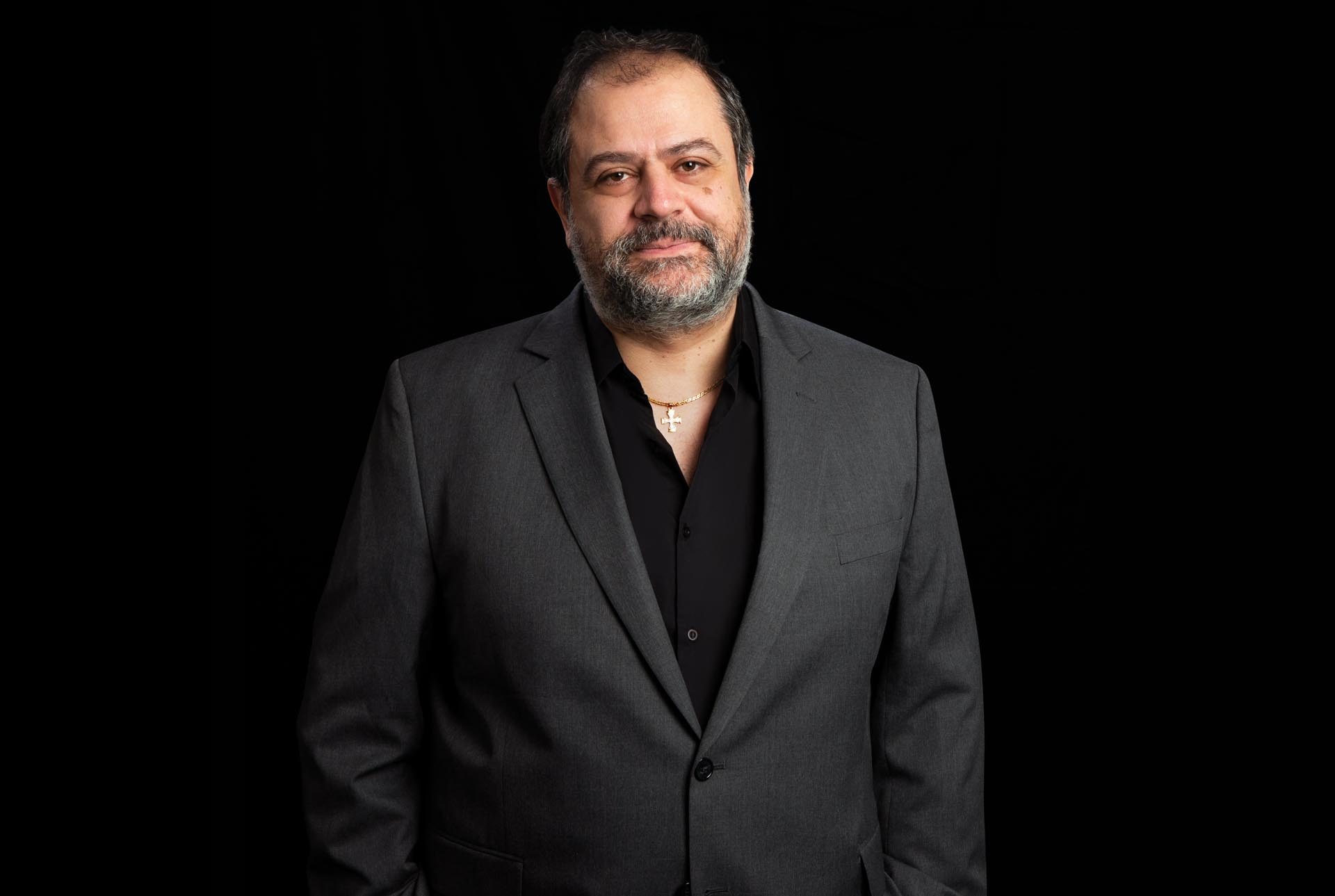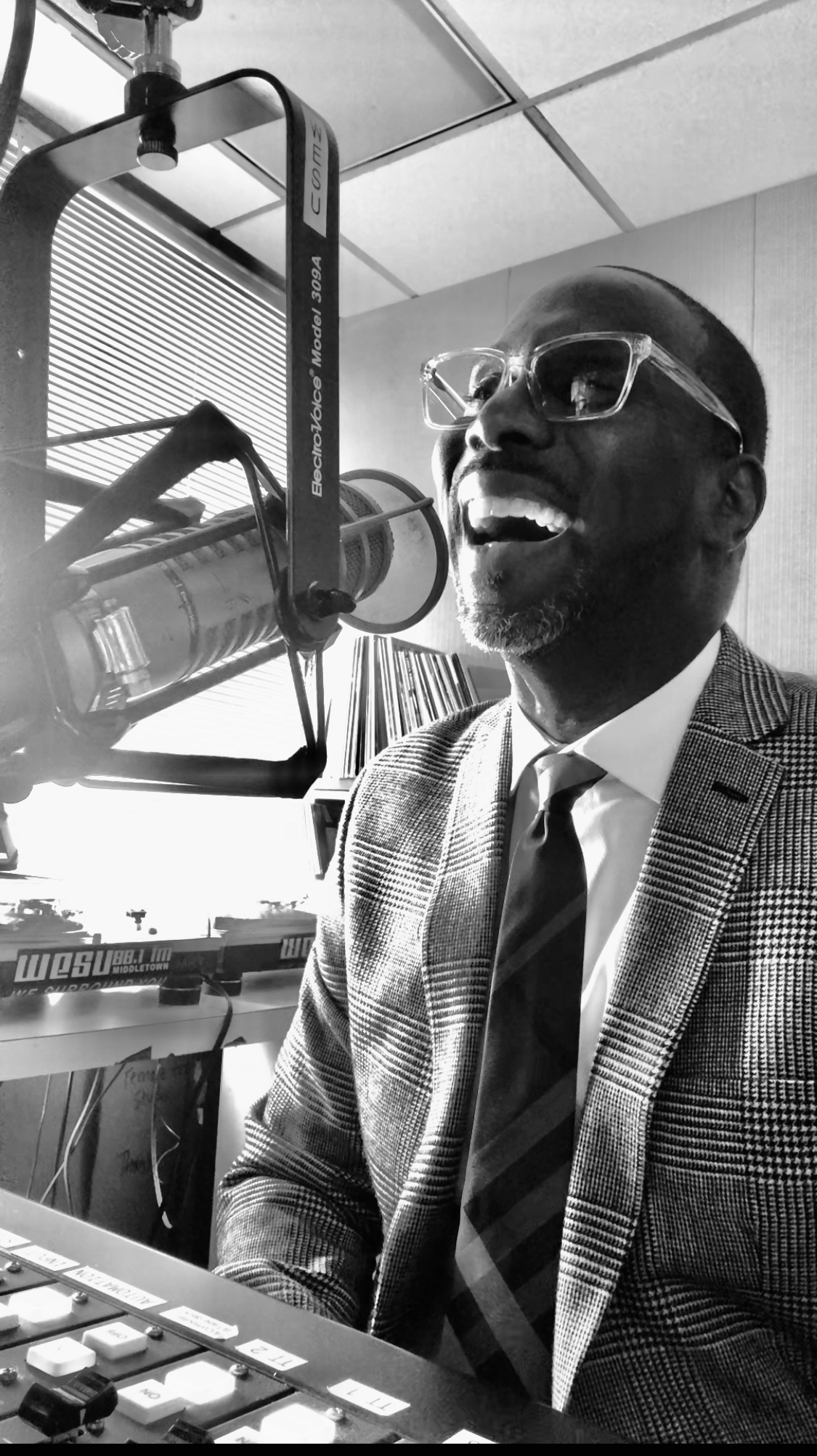The Why Axis: Cutting-Edge Science at Wesleyan

In search of photonic breakthroughs, Professor of Physics Tsampikos Kottos often finds himself learning the most from challenges and failures, which make many scientific discoveries look inconceivable but also motivate him to challenge the elusive.
Invisibility cloaks, time-reversibility management, and futuristic race cars and jet airplanes are the elusive goals. If the research Tsampikos Kottos and his team of top-level scientists and students are conducting goes well enough, such inventions are not out of the question.
Things would have to break pretty fortuitously to allow the first two. But the latter two are well within the realm of possibility, a chief reason the Defense Advanced Research Projects Agency (DARPA), the U.S. Department of Defense’s futuristic projects arm, recently awarded Kottos and his team a four-year, $2,794,606 grant to study and develop the next generation of photonic-based instrumentation technology. Wesleyan was selected as the lead institution from a large pool of teams (including national labs like NASA and well-known private sector companies), one of the few times Kottos says a liberal arts college has led this kind of effort.
To oversimplify, the team studies hidden symmetries in equations that dictate the flow of light. The general goal is to understand how that light flow can be controlled and produce extreme responses when it interacts with underlying matter. Learn to control it fully and you might, for example, be able to guide light through an object and then recombine it as if the object was not present, thus rendering the object invisible to the observer on the other side. Or, more practically for the government’s purposes, learn to control it and they can build cutting-edge gyroscopes and accelerometers for jets and automobiles, night vision cameras, and sophisticated laser and satellite technology.
“It would be great if we can learn how to manipulate the hidden symmetries in photonic platforms. My favorite one is time-reversal symmetry,” Kottos said during a recent talk at Wesleyan, laughing and rubbing his graying beard. “The bald part of my head would definitely appreciate such a development.”
A Physicist’s Perspective
Within the project’s four-year time horizon, there are three major steps: the conception and study of fundamental limitations of light-matter interaction in the presence of hidden symmetries, the design and fabrication of photonic devices, and their characterization and full on-chip integration. The second and third steps are the most delicate, and represent the point at which the team begins actively testing its prototypes, as well as their viability in the marketplace. “Our era is about smaller, faster, cheaper, lighter, and more resilient devices,” Kottos says. “If you can do those things, you’re at the top of your game and you will dominate future technologies.”
Unlike with “big data,” which incorporates large information sets gathered over long periods of time, Kottos and his team are using what he calls “smaller data,” essentially building their own methodologies and computer simulations to prove or disprove their concepts. It is a humbling process to often discover their theories need further improvements. But Kottos considers this a crucial and revelatory part of the process (where, of course, the ultimate judge is the actual experiment).
“As an example, we’re simulating a photonic circuit and the data is not coming back the way we would predict with our theoretical models,” Kottos says. “But why? If we figure that out, we might develop even better ideas. I suspect this may be my physicist’s perspective. An engineer would say ‘It doesn’t work, let’s move on.’ But I must know why.”
When working at the cutting edge, as Kottos’s team is, it is the “Why?” that presents the greatest opportunity. DARPA projects are characterized by high-risk/high-gain philosophy, Kottos explains, and are designed to produce usable technology that is affordable and sound enough to move into production. Prototypes alone represent only 25 percent of what they are charged with accomplishing. So, it is crucial to understand where their hypotheses err and how to use data to correctly reconstitute and move the project forward.
“I’ve learned there is a danger in approaching a project with a conventional set of beliefs,” Kottos says. “Being egocentric people, we are sometimes more comfortable with what we know well. But science surprises you all the time. When your hypothesis fails, you have to think and work harder to correct it and learn from the failure. In this way, maybe the goal is not just success, but learning from the process and creating new opportunities from what you learned. My best results were at the end of a long, difficult path full of failures.
“There is actually a poem by the Greek poet C.P. Cavafy called ‘Ithaka’ that beautifully describes this process and my ultimate goal, where he says: ‘Hope your road is a long one.’”



